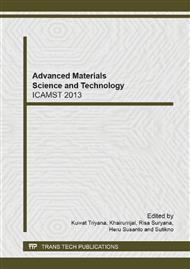p.609
p.613
p.617
p.621
p.626
p.633
p.638
p.642
p.646
Fatigue and Mechanical Properties of Aluminium-Copper Bi-Metal Tubes
Abstract:
Metallurgical bonded aluminium-copper bi-metal tube has a future prospect as an alternative material to copper in the heat, ventilation and air-conditioning (HVAC) industries. The application of aluminum-copper bi-metallic material is seems practical in maintaining the quality of existing products. However, the mechanical strength and fatigue properties of the bi-metal tubes are unknown. In this study, metallurgical, mechanical and fatigue properties of the copper phosphorous alloy and aluminium-copper bi-metal tubes were characterized through metallographic analysis, tensile, bending and fatigue tests. The results show that there observed a weak and brittle Al-Cu intermetallic compound at the interlayer between Al and Cu. Tensile fracture surface observation revealed that separation of Cu from Al occurred at the interlayer. The bending properties of the tubes were influenced by the amount of volume fraction of Cu in the materials. Three point bending fatigue test results showed that a critical buckling stress is presents for tubes with diameter less than 12.7mm. The aluminium-copper bi-metal tubes show degradation of fatigue strength almost 55% as compared to that of Cu alloy tube.
Info:
Periodical:
Pages:
626-629
Citation:
Online since:
February 2014
Keywords:
Price:
Сopyright:
© 2014 Trans Tech Publications Ltd. All Rights Reserved
Share:
Citation:


